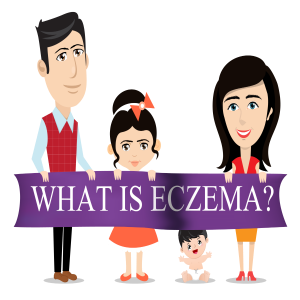Surfactant Skincare Sequence – Surfactants and capabilities – Eczema Blues

Beginning with the Wednesday posts in 2016, they prefer to discover this group of elements that’s current in all cleansers, but in addition has the potential to annoy the pores and skin.
Surfactants are lively elements on surfaces, primarily to cut back the floor rigidity of the pores and skin and take away grime., sebum, oil from beauty merchandise, microorganisms and pores and skin cells exfoliated in emulsified kind for laundry. Various kinds of surfactants have an effect on their cleansing, foaming, emulsifying and solubilizing skills, in addition to their irritant potential.
Why not simply water?
Earlier than persevering with, the best query is why not use water to cleanse our pores and skin. It is because water alone is just not efficient in eradicating grime that may solely be eliminated with oil. Hydrophilic grime can solely be eliminated with water and fat-soluble lipophilic grime solely with oils.
Teams of surfactants
Surfactants are divided into hydrophilic (water-loving), hydrophobic (water-repellent), and lipophilic (oil-loving). Surfactants encompass a fat-soluble (lipophilic) half and a water-soluble (hydrophilic) half. The lipophilic half adheres to grease and grime, and the hydrophilic half permits it to be washed off.
Surfactants carry out completely different capabilities, specifically:
- Cleansing
- Emulsification: it’s positioned on the interface between two immiscible liquids to create an emulsion.
- Solubilization: mixing an oily resolution in a transparent liquid.
- Conditioning
- Moisturizer: will increase the contact between the product and the grime.
Along with capabilities, producers additionally think about softness, biodegradability, toxicity, hydration, pores and skin appear and feel, odor (perfume), and lubrication when formulating their merchandise.
There are 4 essential teams of surfactants, labeled by their polar hydrophilic (water-loving) head group:
- Anionic
- Cationic
- Amphoteric
- Non ionic
Anionic surfactants: unfavorable cost
They supply efficient cleaning and lathering, good moisturizing properties, glorious lathering traits, however reasonable disinfecting properties, and also can irritate the pores and skin.
For instance, carboxylic acids: stearic acid for stick merchandise like deodorants and antiperspirants; Sodium stearate for cleaning soap
Sulfates: present an efficient, foaming and low cost cleansing; frequent irritant, for instance, sodium lauryl sulfate (SLS), an alkyl sulfate utilized in detergents; Sodium laureth sulfate (SLES), an alkyl ether sulfate utilized in shampoos
Sulfonic acid surfactants – dearer than sulfates however much less irritating, for instance dioctyl sodium sulfosuccinate, alkylbenzenesulfonate
Taurates (derived from taurine), isethionates, olefin sulfonates and sulfosuccinates.
Phosphate esters – Alkyl aryl ether phosphates; alkyl ether phosphates
Cationic surfactants: optimistic cost
Efficient for conditioning cosmetics, The optimistic cost causes surfactants to be electrostatically interested in unfavorable (broken) websites on hair and pores and skin protein, making them proof against rinsing. Tough to “combine” with anionic surfactants. It additionally irritates. They can be utilized as antimicrobial preservatives because of their means to kill micro organism.
For instance, amines
Alkylimidazolines
Alkoxylated amines
Quaternized (or quaternary) ammonium compounds. for instance cetrimonium chloride and stearalkonium chloride
Amphoteric surfactants, each positively and negatively charged (relying on the setting)
Helps enhance foaming, conditioning and reduces irritation. Reasonable antimicrobial exercise. It’s utilized in delicate cleansing merchandise, however not in efficient cleaners and emulsifiers. Each alkalis and acids assist to regulate the pH of the water utilized in resolution.
For instance, sodium lauriminodipropionate and disodium lauroamphodiacetate.
Cocamidopropyl betaine, cocoamphoacetate, and cocoampho-diacetate
Non-ionic surfactants – freed from cost
It’s utilized in thick lotions, equivalent to hand or physique lotions, as emulsifiers, conditioning elements, and solubilizing brokers.
Comparatively low potential toxicity and they’re thought of the mildest surfactants, however they’re additionally the most costly.
Capable of solubilize fatty acids and ldl cholesterol within the pores and skin, so it could actually take away lipids from the pores and skin.
For instance, Cocamide DEA (coconut diethanolamide), broadly utilized in private care merchandise for its thickening and lathering properties.
Fatty acid esters of fatty alcohols, sorbitan esters, sucrose and ldl cholesterol derivatives used as emulsifiers
On the next Wednesdays of this month, we are going to discover the influence of surfactants on pores and skin, child pores and skin, and eczema pores and skin and a number of the analysis on this space. I’m studying quite a bit about this as I learn too and it’s not that straightforward to grasp! Any specialists studying this and wanting to assist are welcome, depart a remark when you have expertise on this space or if there’s something to right in my put up (you will not be offended!).

